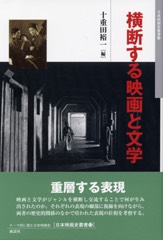News and Opinion
Seo Mitsuyo, Pioneer Anime Director, Passes Away
I heard the rumor some months ago, but I finally came across some articles to make this official: Seo Mitsuyo, the pioneer Japanese animator who directed the first feature length Japanese animated films, died last year, on 24 August 2010. He was 99 years old. For some reason, the passing of such a historic figure has not been officially reported in the press or been the subject of (much deserving) obituaries. My confirmation has just been two articles that Ohara Atsushi published in the Asahi shinbun here and here. There is no news on the exact cause of death.
Seo was a fascinating figure. He first studied painting, but interested in animation, he got involved in the animation group in Prokino and was even arrested for his activities. It is thus ironic that a leftist ended up making some of Japan's most infamous wartime animated propaganda films, and Seo was apparently long ashamed of that part of his career. But we should not forget that he was an innovator, a figure who, along with Masaoka Kenzo, with whom he sometimes worked, laid the foundation for the Japanese animation world we know today. He was the first to introduce the multiplane camera to Japan in Ari-chan in 1941 and then directed Momotaro no umiwashi in 1942, which even at 37 minutes was billed as Japan's first feature-length animated film. (My wife has released that film on DVD with English subtitles as part of the Roots of Japanese Anime collection.)
Japanese Cinema and Literature

The relationship between Japanese cinema and literature has remained a rich topic of study not only because of the long history of adaptations of literary works into film, but also because artists on both sides have been intrigued, both for artistic and political reasons, with the potentials posed by the other medium. Some of this research can contribute to the ongoing discussion of adaptation, but there's always been the danger of much of it falling into dull comparisons of the original and the copy or trite claims about "visual" literature or about "literary" film. My writings on the topic, which include essays on Tanizaki, Akutagawa, and about the word and image in Japanese cinema, as well as a book on A Page of Madness, have tried to avoid these pitfalls by focusing on how each medium has pictured the other, within a larger discursive field defined by conflicts over the definitions of image and language.
Toeda Hirokazu of Waseda University is the preeminent literature scholar working on these issues in Japan, and he has just come out with an exciting edited volume as part of Shinwasha's Nihon eigashi sosho series (another volume of which featured my essay on Japanese film criticism).

